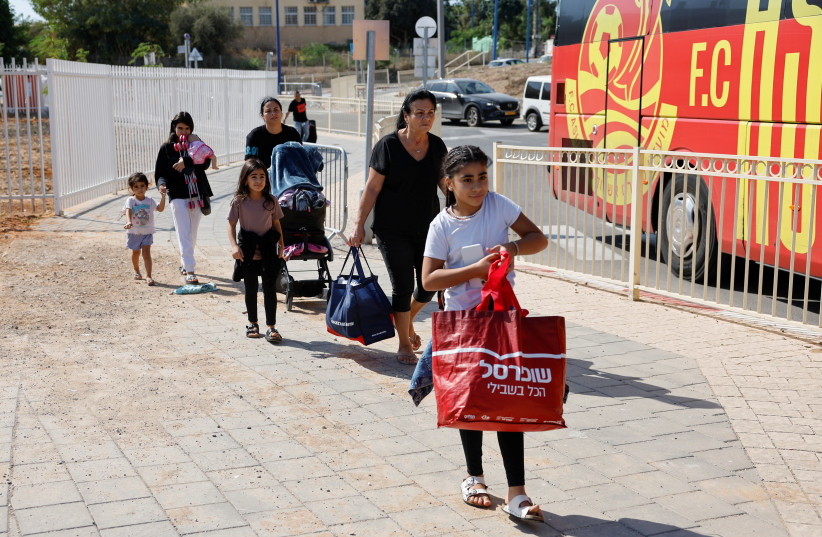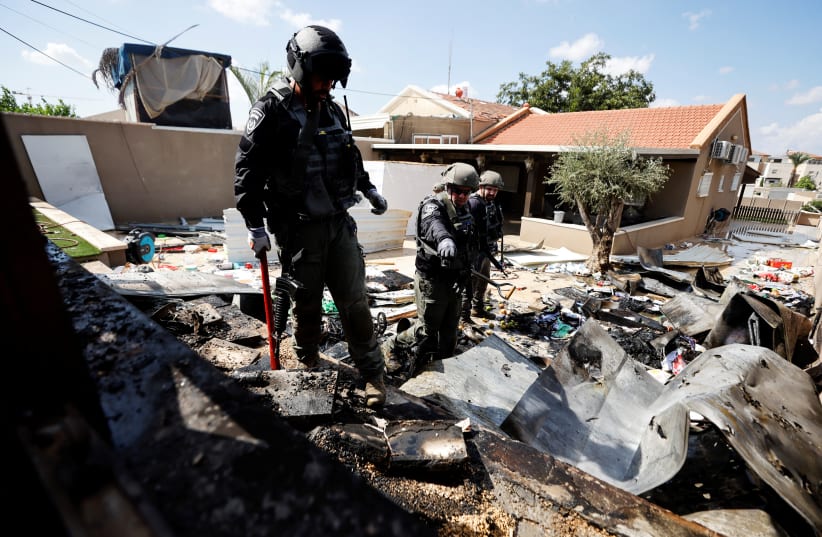Israel completely withdrew from the Gaza Strip in August 2005, uprooting several army installations, 21 settlements, and some 9,000 Jews who lived there for a generation.
During the heated debate over the so-called “disengagement” plan, supporters of the Gush Katif residents and the settlers themselves warned continuously that by withdrawing civilians and soldiers from Gaza, the terrorists would be at the doorstep of the communities bordering the Gaza Strip, the so-called “Gaza envelope” communities.
The argument was simple: settlement enhances security; where Israelis are, the terrorists are not.
That argument did not prove persuasive. “What are you talking about,” ran the counter-argument, “soldiers are getting killed inside Gaza.”
According to an article in Friday’s Makor Rishon, some 268 Israelis -- civilians and soldiers -- were killed in the Gaza Strip in nearly four decades between the Six-Day War, when Israel gained control of the area, and the 2005 withdrawal. By comparison, more than 1,300 were killed on one nightmarish day just over a week ago.


Then prime minister Ariel Sharon sold his “disengagement” plan by saying that once Israel withdrew, and there was a clear border with a security fence -- “them over there, us over here” -- Israel would be better able to defend itself without having to control the lives of some two million Palestinians living there. And, he and his spokespeople added, if they dared fire rockets, Israel would either flatten the Strip or retake it.
That argument won, and in the summer of 2005, Israel, by its own choice, pulled some 9,000 Jews out of the Gaza Strip.
Now, Sderot is being evacuated
On Sunday, 18 years later, Israel finished the evacuation of all but 10 percent of the 36,000 residents of Sderot. This evacuation was not done by choice, but rather a product of horrific circumstances, of the slaughter carried out there and in surrounding communities -- some of them gutted and burned to the ground.
Israel, for the first time since the evacuation of Gush Etzion in 1948, is emptying an entire region of the country because of enemy action.
It took 19 years before Jews began returning to Gush Etzion, something that started almost immediately after the 1967 Six-Day War. Obviously, it will not take that long for people to return to their homes in Sderot, because -- unlike the Gush Etzion precedent -- the region did not fall into the enemy’s hands.
But still, a completely different way of thinking is going to be needed before people are going to be willing to live in Sderot and communities nearby.
Prime Minister Benjamin Netanyahu went to Be’eri and Kfar Azza on Friday, communities where the traumatized residents have been evacuated, and told soldiers there that Israel will win the war and then rebuild these communities that will be known as the “region of Rebirth.”
It is a noble sentiment, but it won’t happen that fast, and it won’t happen without the complete total destruction of Hamas.
“There is a need to completely destroy Hamas and Islamic Jihad,” Sderot Mayor Alon Davidi said Sunday. “There is a need to strengthen the government and the nation and say clearly: it is either them or us, it is forbidden for Hamas or Islamic Jihad to be here.”
Davidi’s message is clear. If Sderot, or the kibbutzim and moshavim in the region, are ever to come back and flourish, the reality on the other side of the fence has to change fundamentally. If Hamas is there, it will be impossible to repopulate the area around it.
Davidi’s words reflect a different way of thinking: it is not as if after the current war, Israel will simply withdraw after Israel degrades Hamas’ capabilities. This time, there is the expectation among many that either the IDF will have to remain in parts of the Gaza Strip, or the border will be redrawn so that nearby communities will never have to face a similar nightmare.
Over the last 25 years, Israel voluntarily removed two buffer zones created along hostile borders. The Gush Katif settlements and the army installations inside Gaza proved one buffer zone, and southern Lebanon represented another one in the north.
Both were removed, with tragic consequences. Hamas moved within a few kilometers of Sderot and pounced when it saw the opportunity, and Hezbollah moved to within a few hundred meters of Metulla and Shlomi in the north.
The concept that Israel can live happily and prosper fully with terrorist organizations armed to the teeth within spitting distance from its civilian population centers collapsed. The Simchat Torah massacre disabused many people of that notion.
A few months ago, only those considered on the far-right would talk about resettling Gaza. Now, the idea that once the IDF dismantles Hamas, it might have to stay in parts of Gaza so that the terrorists do not attack and those communities around it can indeed be “reborn,” no longer sounds to many like wild rantings.
